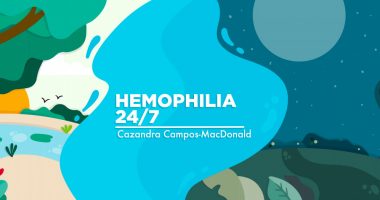CRISPR/Cas9 for hemophilia
What is CRISPR/Cas9 for hemophilia?
CRISPR/Cas9 is a gene-editing technology that can be used to alter the genetic sequence of a specific gene inside a cell. Several preclinical studies have indicated that the molecular tools in CRISPR/Cas9 might be used to treat or even cure hemophilia.
Hemophilia is caused by mutations that impair the production or activity of certain clotting factors — proteins that are required for blood clotting. Hemophilia A, the most common type of this blood disorder, is caused by mutations in the F8 gene that provides the instructions to make factor VIII (FVIII). Meanwhile, hemophilia B, the second most common type, is caused by mutations in F9, the gene that encodes for clotting factor IX (FIX).
The basic purpose behind the use of CRISPR/Cas9 in hemophilia is to restore the production and function of the specific clotting factor that’s missing or defective. It works by either correcting the genetic sequence of the mutated gene or inserting a healthy copy of the gene into patient cells.
No therapy based on CRISPR/Cas9 has been tested in people with hemophilia to date, although this technology already has been used to create treatments for other diseases. In late 2023, the U.S. Food and Drug Administration approved for the first time a gene therapy based on CRISPR/Cas9, called Casgevy (exagamglogene autotemcel), for sickle cell disease.
How does CRISPR/Cas9 work in hemophilia?
The CRISPR/Cas9 gene-editing system uses short pieces of RNA, referred to as guide RNAs, that are designed to target a specific part of the genetic sequence of a gene of interest, such as F8 or F9. When the guide RNA binds to the target gene, it triggers an enzyme — usually Cas9, though other enzymes like Cpf1 also have been used — to make a cut in the DNA.
When the DNA is cut, the cell’s DNA-repairing molecular machinery becomes activated to repair the damage. Once the repair process is underway, machinery components can be manipulated to add, remove, or alter certain parts of the gene, ultimately allowing for targeted gene editing.
The CRISPR/Cas9 system originally was developed by adapting a naturally-occurring set of molecular tools that bacteria use to fight off infecting viruses. When a bacterium is infected with a virus, it will take small sections of the virus’ DNA and store it in special regions of its own DNA. It then will use that genetic code to create RNA molecules that can specifically recognize and attach to certain portions of that virus’ DNA.
When re-infected by the same type of virus, bacteria will use those RNA molecules to guide Cas9, or a similar enzyme, to cut the virus’ DNA sequence, effectively inactivating it. The term CRISPR stands for “clustered regularly interspaced short palindromic repeats,” referring to the regions of bacterial DNA where the viral genetic code is stored.
While CRISPR/Cas9 is a promising gene-editing tool to correct mutations that underlie hemophilia and other genetic diseases, its therapeutic use still poses challenges. One particular issue is the possibility of off-target effects — unintended gene edits that may occur in other parts of the genome, potentially leading to long-term complications, including cancer.
CRISPR/Cas9 in hemophilia therapies
There aren’t yet any approved hemophilia treatments that make use of CRISPR/Cas9 technology. However, treatment strategies using this approach have shown promise in preclinical models of both hemophilia A and hemophilia B, and several companies are working to develop therapies for hemophilia based on CRISPR/Cas9.
Casebia Therapeutics, a joint venture created in 2015 between CRISPR Therapeutics and Bayer, was developing a two-step gene therapy for hemophilia A based on CRISPR/Cas9. It first used a viral vector to deliver a healthy copy of the F8 gene. This was followed by the delivery of CRISPR/Cas9 components that would then integrate the healthy gene into liver cells — the main producers of clotting factors in the body. This approach had shown promise in a mouse model of hemophilia A.
This joint venture between the companies has since been terminated, but the two are still collaborating on a hemophilia A gene-editing program.
ASC Therapeutics also is developing a CRISPR/Cas9 gene-editing treatment for hemophilia A, which was able to restore clotting factor production in mouse and cellular models of the disease.
Further, Regeneron Pharmaceuticals and Intellia Therapeutics have announced a collaborative project that aims to create gene-editing therapies for hemophilia based on CRISPR/Cas9. Research by Intellia has indicated that the gene-editing technology may be better than traditional approaches in gene therapy at restoring the activity of factor IX.
Intellia has since left the partnership, leaving Regeneron to continue developing the program on its own. A Phase 1 trial testing a candidate gene-editing therapy for hemophilia B resulting from this project is expected to launch soon.
Poseida Therapeutics and Takeda also have partnered to develop therapies for hemophilia and other diseases using a similar gene-editing system called Cas-CLOVER.
Hemophilia News Today is strictly a news and information website about the disease. It does not provide medical advice, diagnosis or treatment. This content is not intended to be a substitute for professional medical advice, diagnosis, or treatment. Always seek the advice of your physician or other qualified health provider with any questions you may have regarding a medical condition. Never disregard professional medical advice or delay in seeking it because of something you have read on this website.
Related articles

 Fact-checked by
Fact-checked by 



